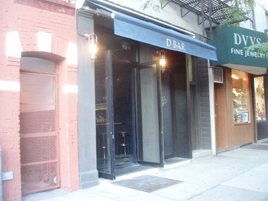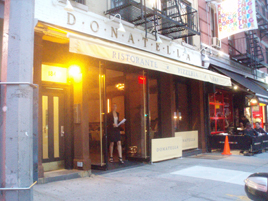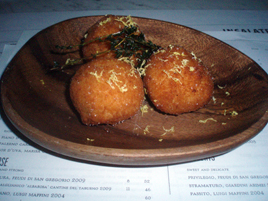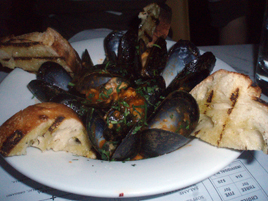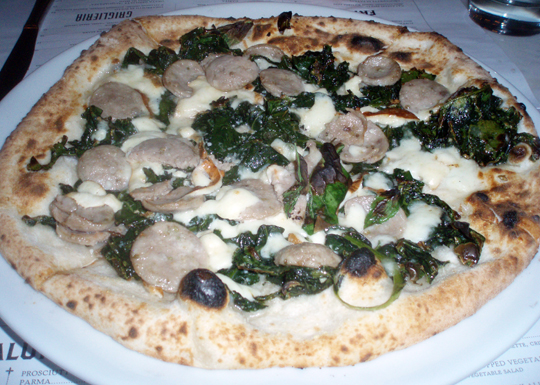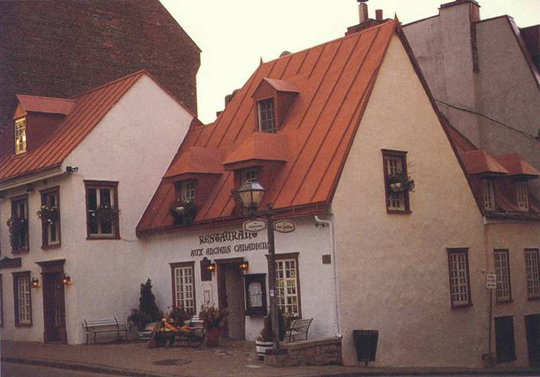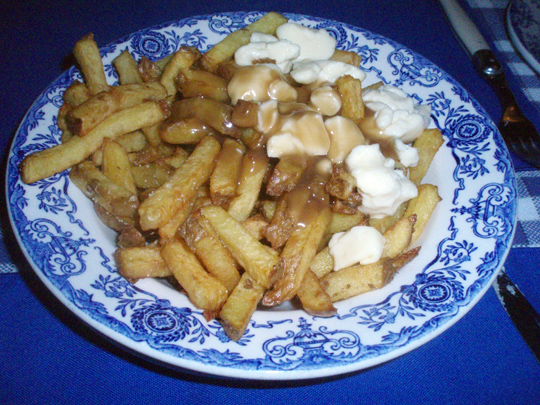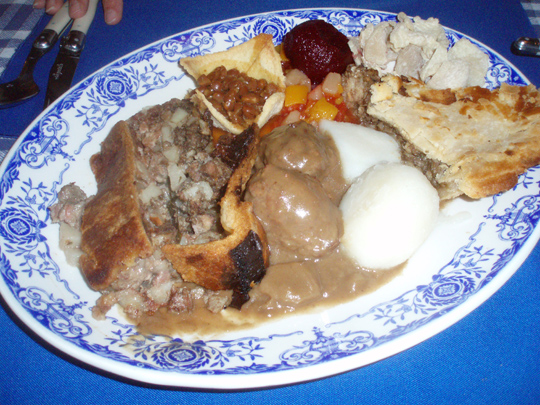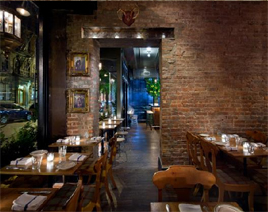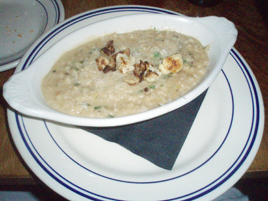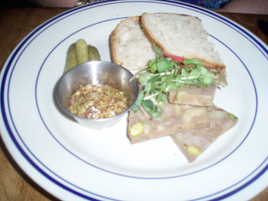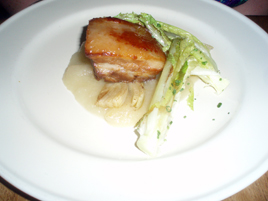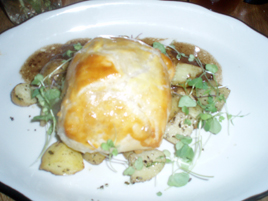
Note: Bar Basque closed in April 2012: yet another Jeffrey Chodorow place that folded after a brief, undistinguished run. At some point, you’d think the guy would stop wasting his money.
*
For a Thursday evening dinner with out-of-town friends whom I hadn’t seen in a year, I took a grave risk: I booked a Jeffrey Chodorow restaurant, sight unseen, which has (as yet) been reviewed by no one.
Bar Basque’s concept intrigued me. Basque cuisine is not exactly over-represented in Manhattan, and the chef, Yuhi Fujinaga, has worked at some serious places, including Eighty One, Alain Ducasse, Lespinasse—and of course, in Spain. But this is a Chodorow restaurant, so you know it will be weighed down with gimmicks, the service will be terrible, and in all likelihood it’ll be irrelevant or closed within a couple of years.
I took a shot anyway, and my predictions were right on most counts. The food wasn’t bad (nor was it great); the concept is weighed down with gimmicks, and the service is terrible. For the record, the Chod himself was in attendance, entertaining guests at a six-top.
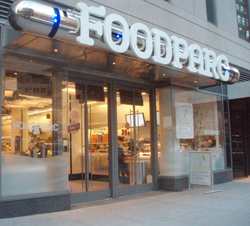 Bar Basque is in the Eventi Hotel, which is home to another Chodorow gimmick-fest, FoodParc—basically, a shopping mall food court with the mall omitted—which the Village Voice has already slammed with a scathing review.
Bar Basque is in the Eventi Hotel, which is home to another Chodorow gimmick-fest, FoodParc—basically, a shopping mall food court with the mall omitted—which the Village Voice has already slammed with a scathing review.
Both FoodParc and Bar Basque were designed by futurist Syd Mead, who is supposed to have “called science fiction ‘reality ahead of schedule’.” He is best known for such films as Blade Runner, Tron, Aliens, and Star Trek: The Motion Picture.
Mead’s all-red vision of the future looks like it could have been designed ten years ago. Given the crimson overload at The Lambs Club and and Nuela, both recently opened, Bar Basque is like the third girl showing up to party in the same dress.
More importantly, what does it have to do with the Basque theme? Answer: nothing. If this restaurant fails (as most Chodorow restaurants do), he can quickly substitute the cuisine of some other nation, and re-open with the same, equally irrelevant décor.
Even the name, Bar Basque, seems passé. A couple of years ago, every other restaurant was Bar This or Bar That, even without being bars in the strictest sense. “Bar Basque” is so 2008. Then again, look across Chodorow’s portfolio, past and present: Hudson Cafeteria wasn’t a cafeteria; Kobe Club wasn’t a club; Tanuki Tavern isn’t a tavern.
The service was Chodorrific, meaning not great. I arrived five minutes early; naturally, the hostess would not seat me, even though (at 6:00 p.m.) the restaurant was practically empty, and at no point in the evening would it be full. I ordered a cocktail, and just moments later my friends (who do not drink) arrived. Naturally (this being a Chodorow place) they would not transfer it to the table. That would make too much sense.
About that cocktail, by the way: there’s a Gin & Tonic section of the menu, offering half-a-dozen versions of the classic with different gins, a multiplicity of tonics, and various additives. I can’t really complain, since I’m a G&T guy from the dark ages, but it isn’t exactly a fashionable drink, so I couldn’t help but laugh to see a cocktail menu with six of them. The server pours tonic water from a screw-top bottle on top of gin already in the glass, so I cannot say they are being carefully measured and mixed.
We were seated and menus arrived. They’re in folders nearly big enough to be cheap bathmats. You can’t open them comfortably without knocking something over. We were still studying them, and the server arrived, intent on upselling us into Pintxos (tapas) to start. No menu for these had been supplied, but the server knew which ones we ought to have (hint: the most expensive), and “I’d be happy to put in an order right away.” We demured. Having checked the website afterwards, it appears she was trying to add another sixty bucks to the bill.
When we placed our order a few minutes later, she seemed quite dismayed: “So, you’ve decided not to order the Pinxtos?” Negatory.
Upselling quite this brazen is not a characteristic of New York restaurants, in general. It has to be carefully taught—in this case, at the University of Chod, where the first required course is how to upsell, deny seating to incomplete parties, and refuse to transfer the bar tab—all mandatory subjects in the practicum before graduation. Successful students are guaranteed placement in one Choddy restaurant or another.
Bread service came after a delay, but at least it was fresh.
All of this, mind you, was in the first fifteen minutes, whereupon we were feeling foul about Bar Basque, no matter how good the food might be. While we waited for our food, I narrated for my out-of-town friends the legend of the Man Named Chod, all of his failed restaurants, and how there is invariably something crass about them, even when the food is successful.
The menu is on the expensive side. Sharing plates come in a wide range, $4–34 (the high end being the Iberian ham); appetizers $12–19; entrées $28–39; side dishes $7–9. More than half of the twenty entrées are in a sub-section captioned “From the Grill,” a distinction that (one quickly learns) means they come with no accompaniments, and you will need a side dish if you want more than just protein on a plate.

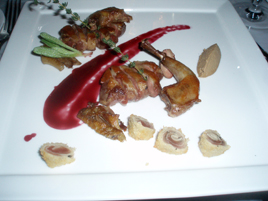
I started with the Crispy Farm Egg ($12; above left), with olive oil crushed potatoes, peppers, Serrano ham, and cheese broth. It is hard to go wrong with a runny egg and Serrano ham, although I thought the egg was slightly over-cooked.
The restaurant plans to feature the menus of guest chefs every other month. Through the end of October, Daniel Garcia of Zortziko in Bilbao, Spain, is on hand. His entire six-course meal is $89 (it’s a special insert to the menu), but the components are also available à la carte. I couldn’t resist trying the Squab Five Ways (above right), although it will be offered for only another week. The breast was very good (a bit like duck in miniature), but the other four ways were forgettable, particularly a mousse (right-hand edge of the photo) that was served without anything to spread it on. I believe the squab was supposed to be $32, but I didn’t realize until I got home that it was left off the bill. I am fairly certain that it was not a deliberate comp.
I didn’t photograph or taste my friends’ choices, which they found underwhelming: beet salad, monkfish, cod, a side of grilled vegetables.
The main dining room is on a terrace with a retractable roof (it was closed on this occasion) and a view onto a courtyard, with a jumbotron screen that displays soothing graphics having nothing at all to do with, really, anything. But that terrace is actually a very nice place, with tables widely spaced, and mercifully free of the overbearing all-read décor inside. If the whole restaurant had been designed with the same taste, it might have been a lot better than it is.
Perhaps I’ll return in a couple of years, on a nice summer day, when the roof is open. By then, Bar Basque will probably be Swedish. Or something.
Bar Basque (839 Sixth Avenue at 29th Street, in the Eventi Hotel, Chelsea)
Food: Satisfactory
Service: Chodorrific
Ambiance: Ten Years Too Late
Overall: Satisfactory
 Tuesday, October 26, 2010 at 03:10PM
Tuesday, October 26, 2010 at 03:10PM 

 Here is one big hint that the new restaurant MPD probably wasn’t built for guys like me: I thought the name stood for Meatpacking District.
Here is one big hint that the new restaurant MPD probably wasn’t built for guys like me: I thought the name stood for Meatpacking District.
 Those things are all worth cheering about.
Those things are all worth cheering about.



